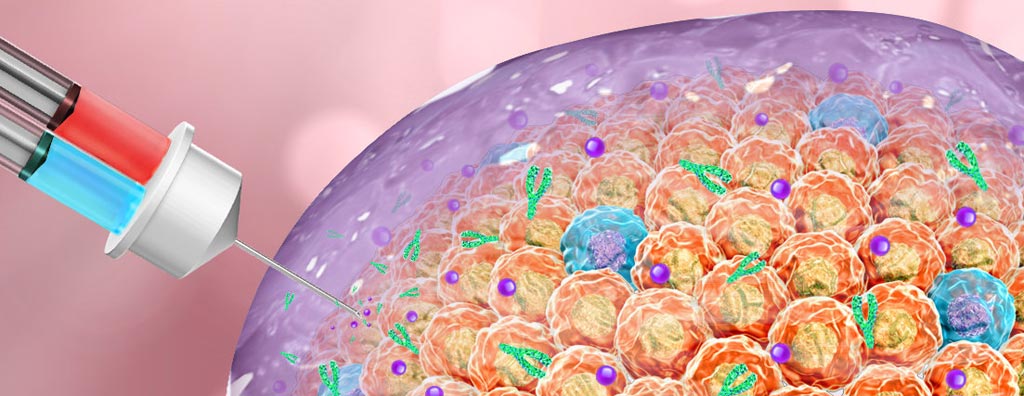Novel Hydrogel Slows Tumor Growth and Prevents Recurrence
By LabMedica International staff writers
Posted on 06 Mar 2018
A team of cancer researchers developed a novel hydrogel device designed to be injected at the site of a tumor, where it forms a scaffold for sequential release of chemotherapeutic and immunotherapeutic drugs.Posted on 06 Mar 2018
Clinical experience has shown that patients with low-immunogenic tumors respond poorly to immune checkpoint blockade (ICB) treatments that target the programmed death-1 (PD-1)/programmed death-ligand 1 (PD-L1) pathway. On the other hand, patients responding to ICB can experience various unpleasant side effects.

Image: When injected into tumors, this therapy forms a gel to attack cancer cells (Photo courtesy of the Gu Laboratory, University of North Carolina).
Investigators at the University of North Carolina (Chapel Hill, USA) addressed both of these concerns by maximizing drug access to tumors while minimizing systemic exposure to the drugs. To do this, they engineered a therapeutic scaffold that, when formed in situ, allowed the local release of gemcitabine (GEM) and an anti–PD-L1 blocking antibody (aPDL1) with distinct release kinetics. The scaffold consisted of a reactive oxygen species (ROS)-degradable hydrogel that released therapeutics in a programmed manner within the tumor microenvironment (TME), which contained abundant ROS.
The investigators reported in the February 21, 2018, online edition of the journal Science Translational Medicine that, once in place, the hydrogel first released cytotoxic chemotherapy, which killed some cancer cells before releasing most of an immune checkpoint inhibitor, which then stimulated antitumor immunity. The investigators employed this approach to inhibit growth of primary tumors in mouse models as well as to prevent tumor recurrence after surgery.
"We have created a simple method to use chemotherapy while leveraging the biology of the tumor and our natural defense against foreign invaders to beat back tumor development with limited side effects," said senior author Dr. Zhen Gu, associate professor of biomedical engineering at the University of North Carolina. "We have a lot more work to do before human clinical trials, but we think this approach holds great promise."
"Regarding the potential of this approach, scientists should further investigate the biocompatibility of using the gel scaffold for clinical benefit," said Dr. Gu. "Meanwhile, we will optimize the dosages of combination drugs as well as treatment frequencies."
Related Links:
University of North Carolina




 assay.jpg)









